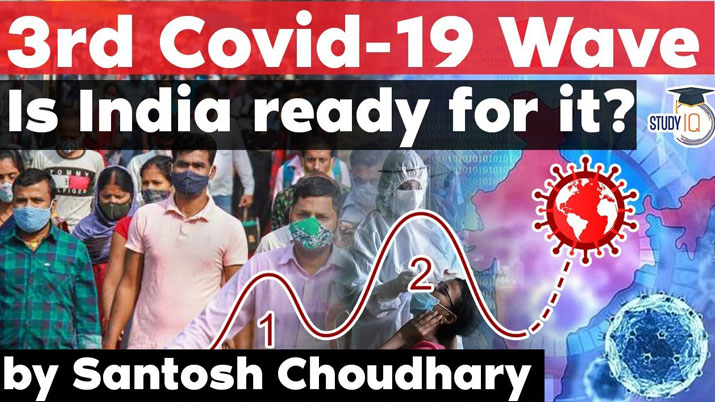As the second wave in the country is withdrawing and the recovery rate is showing a positive response, the government is preparing in advance for the upcoming third wave of the virus, which is predicted to hit the country by September-October. The government after having successfully vaccinated a major of the adult population is now focusing on the youth generation and children. For instance, the Uttar Pradesh government plans to identify and vaccinate parents of children below 10 years. Since June 15, the state government started distributing free medicine kits consisting of cough syrup and chewable tablets among children through its network of Accredited Social Health Activists or ASHA and other frontline workers.
The Jharkhand has prepared a manual detailing its treatment plans and management of children during the third wave, and has estimated that it would require over 6,000 beds for them. It states that at least 14 lakh children in the state would be at risk of Covid-19 in the third wave, even though those below 14 years comprised only 5% of the total cases between March and April this year.
In Karnataka, the government has set up a task force to create additional pediatric wards and Covid care centres for children across districts.
Also, India’s epidemiologists too have given very clear indications that the third wave of Covid-19 is inevitable, and it is likely to start from September-October. Therefore the country should vaccinate more and more people. NITI Aayog member VK Saraswat said that India coped with the second wave of coronavirus very well as the number of new cases of infection has come down significantly. He said, “I think we have done reasonably well. We have managed the second wave of the Covid-19 pandemic very well as a result, Covid-19 numbers have come down significantly.”
“… we have been able to manage (the second wave Covid-19 ) with the help of our science and technology activities, creating oxygen banks, making large number of industries to support oxygen supply. Using railways, using airports, using the military for transporting liquid oxygen,” Saraswat said
He further added, “Earlier, more than 4 lakh cases were being reported daily in the country, but in the last few days, the number of new cases of infection has come down to around 1.3 lakh.”
Critical Care Specialist Dr Brijendra Kumar Rao said, “The problem is that the second wave was nothing like the first wave, so we weren’t able to deal with it the same way,” he says, “To go from a small number to over four lakh active cases is not something we could have prepared for in the same way. No country has dealt with a challenge that great. Now, we have these speculations of the third wave. The only thing we know is that we should be prepared for it whether it comes or not.”
It’s not a question of where we went wrong, he says. “It is about being prepared for what is to come even if the challenges are different. A few months ago, we didn’t know what we were facing. But now, we have the experience of the first wave and second wave with us. If it is anything like the previous one, we should be able to sail through easily.”
Thus, the country is now mentally prepared to fight the third wave, as the second wave was nothing like the first wave it was extremely difficult to deal with it at a calm manner. Researchers are claiming the third wave to be even more aggressive, but the medical support system of the country has now revived which crippled during the second wave. Due to shortage of beds and other medical helps in the hospitals, lack of oxygen in the country and the number of cases leaping everyday it was a very scary scenario throughout the country.


